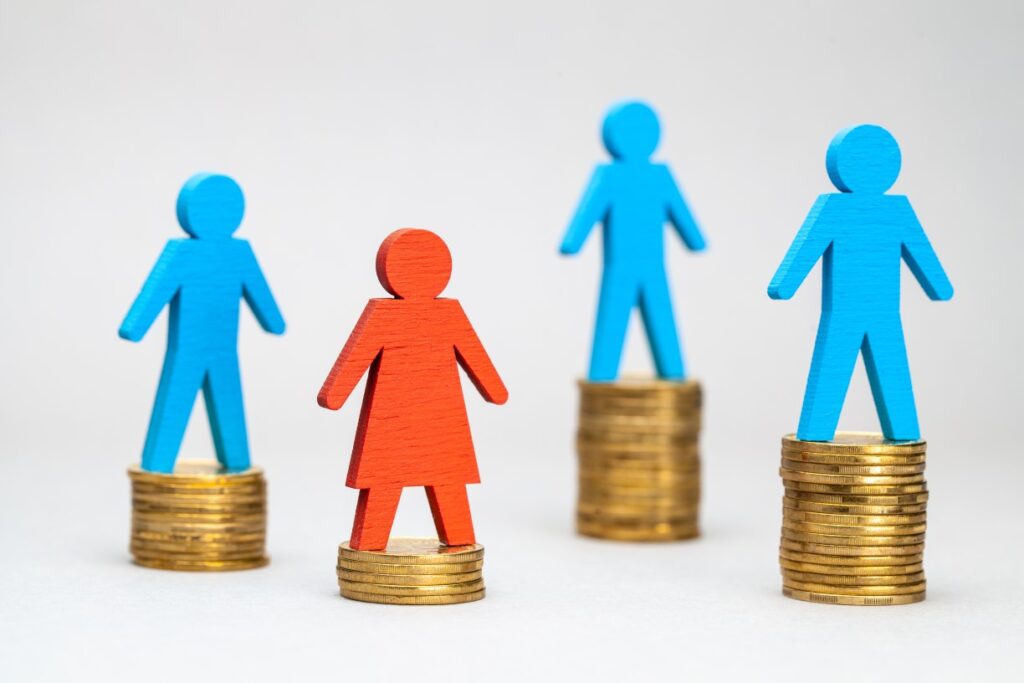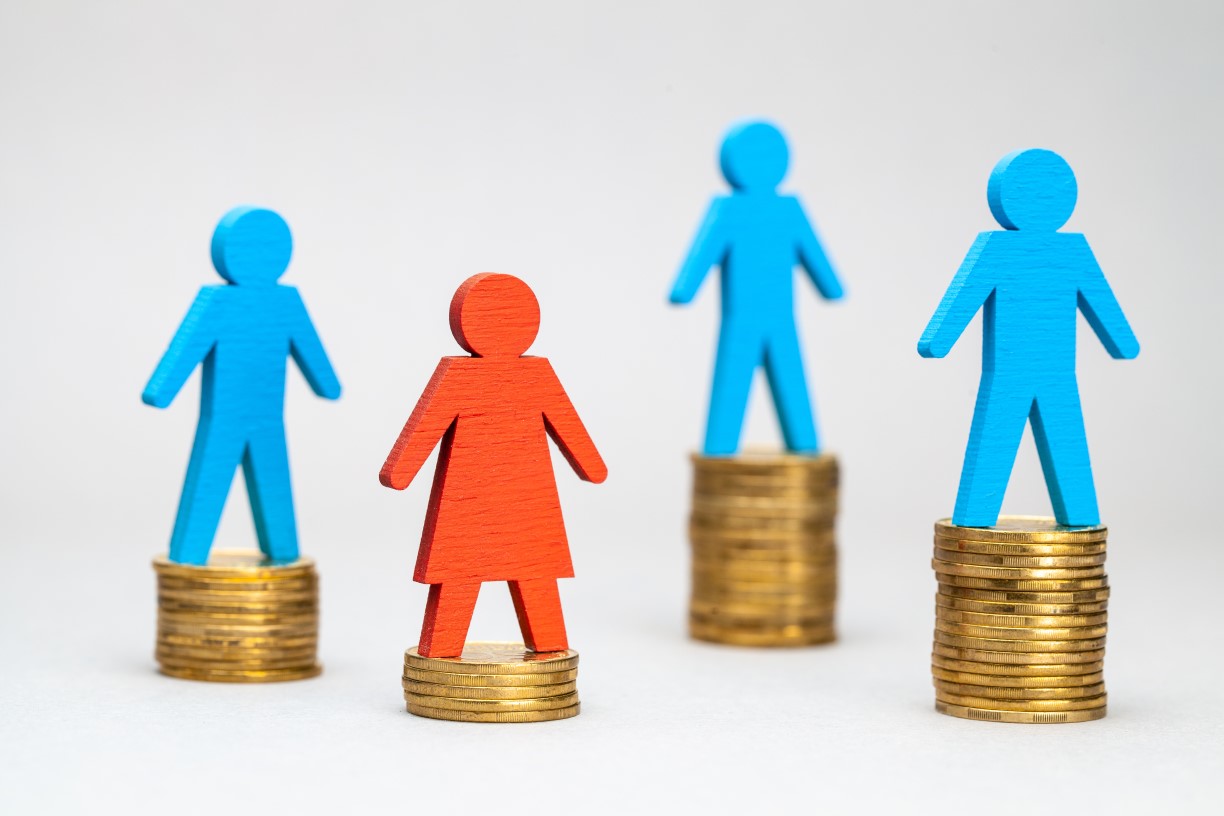
Unpacking Sexist Women: Examining Internalized Misogyny and its Manifestations
The term “sexist women” often evokes strong reactions, prompting discussions about internalized misogyny, societal expectations, and the complexities of gender dynamics. It’s crucial to approach this topic with nuance, understanding that sexism isn’t solely a male phenomenon. Women, too, can perpetuate sexist beliefs and behaviors, often unconsciously influenced by the patriarchal structures that shape our world. This article aims to explore the multifaceted nature of sexist women, examining the underlying causes, various manifestations, and potential pathways toward dismantling these harmful patterns.
Understanding Internalized Misogyny
At the heart of the concept of “sexist women” lies internalized misogyny. This refers to the unconscious adoption of misogynistic beliefs and attitudes by women themselves. These beliefs, often rooted in societal conditioning, can manifest in various ways, including self-deprecation, competition with other women, and the perpetuation of harmful stereotypes. [See also: The Impact of Gender Stereotypes on Women’s Careers]
Internalized misogyny isn’t a personal failing but rather a consequence of living in a patriarchal society. From a young age, women are often bombarded with messages that devalue their worth, limit their potential, and pit them against each other. These messages can become deeply ingrained, shaping their perceptions of themselves and other women.
The Roots of Internalized Misogyny
Several factors contribute to the development of internalized misogyny:
- Societal Conditioning: Media portrayals, cultural norms, and historical biases all contribute to the perpetuation of sexist beliefs.
- Family Dynamics: Family roles and expectations can reinforce traditional gender stereotypes, influencing a woman’s understanding of her place in the world.
- Peer Pressure: Social pressures within female peer groups can lead to competition and judgment based on appearance, relationships, and achievements.
- Lack of Representation: The underrepresentation of women in positions of power and influence can reinforce the idea that women are less capable or less deserving than men.
Manifestations of Sexist Behavior in Women
The effects of internalized misogyny are varied and can manifest in numerous ways. Identifying these manifestations is crucial for understanding the complexities of “sexist women” and working towards positive change. Here are some common examples:
Judging Other Women
One of the most common manifestations of internalized misogyny is the tendency to judge other women harshly, particularly regarding their appearance, choices, and relationships. This can involve criticizing their clothing, their parenting styles, or their career paths. This judgment often stems from the belief that women must adhere to certain standards to be considered worthy or successful. The “sexist women” might participate in gossip or spread rumors that undermine other women’s reputations and achievements.
Competing with Other Women
Patriarchal structures often encourage competition among women, fostering a sense of scarcity and the belief that there is only room for a limited number of successful women. This can lead to intense rivalry in the workplace, social circles, and even personal relationships. Women may feel pressured to constantly prove themselves and outshine their female peers, perpetuating a cycle of insecurity and competition. This competition can be seen as a form of “sexist women” behavior.
Perpetuating Harmful Stereotypes
Internalized misogyny can also manifest in the perpetuation of harmful stereotypes about women. This includes reinforcing the idea that women are overly emotional, irrational, or incapable of leadership. By repeating these stereotypes, women inadvertently contribute to the very biases that hold them back. They may make statements that reinforce gender roles or diminish women’s accomplishments. This is a clear example of “sexist women” acting in accordance with harmful stereotypes.
Defending the Patriarchy
Surprisingly, some women actively defend patriarchal structures and values, often out of a desire to maintain the status quo or gain approval from men. This can involve downplaying instances of sexism, dismissing women’s concerns, or even actively opposing feminist movements. These “sexist women” may believe that traditional gender roles are beneficial or that women who challenge the system are somehow threatening.
Self-Deprecation and Low Self-Esteem
Internalized misogyny can also lead to self-deprecation and low self-esteem. Women who have internalized negative messages about their worth may struggle with feelings of inadequacy and self-doubt. They may constantly criticize themselves, downplay their accomplishments, and avoid taking risks for fear of failure. This self-deprecating behavior reinforces the idea that women are inherently less valuable than men. The impact on self-worth is significant, turning them into “sexist women” against themselves.
The Impact of Sexist Women
The impact of “sexist women” extends far beyond individual interactions. It contributes to the perpetuation of gender inequality and undermines the progress of feminist movements. When women internalize and act upon misogynistic beliefs, it reinforces the idea that sexism is acceptable and normal, making it more difficult to challenge and dismantle patriarchal structures.
The effects of “sexist women” can be particularly damaging in the workplace, where it can contribute to a hostile environment for women and hinder their career advancement. When women are judged and undermined by their female colleagues, it can create a sense of isolation and discourage them from pursuing leadership roles. [See also: Addressing Gender Bias in the Workplace]
Furthermore, the actions of “sexist women” can have a negative impact on young girls and women, shaping their perceptions of themselves and their potential. When girls witness women judging and competing with each other, it can reinforce the idea that they must conform to certain standards to be accepted and valued. This can lead to a cycle of internalized misogyny that perpetuates itself across generations. The need for positive female role models becomes even more critical in this context.
Breaking the Cycle: Moving Towards Empowerment
Addressing the issue of “sexist women” requires a multifaceted approach that focuses on raising awareness, challenging internalized beliefs, and fostering solidarity among women. It’s crucial to create spaces where women can openly discuss their experiences, challenge harmful stereotypes, and support each other’s growth. The path to empowerment involves recognizing and dismantling the internalized misogyny that holds women back. This process often starts with self-awareness and a willingness to challenge ingrained beliefs.
Education and Awareness
Education is a key component in dismantling internalized misogyny. By learning about the history of sexism, the ways in which it manifests in our society, and the impact it has on women’s lives, women can begin to recognize and challenge their own internalized beliefs. Workshops, seminars, and online resources can provide women with the tools and knowledge they need to understand and overcome internalized misogyny. These resources can also help women identify and challenge sexist behavior in others.
Challenging Internalized Beliefs
Challenging internalized beliefs requires a conscious effort to question the negative messages and stereotypes that women have absorbed over time. This can involve examining one’s own thoughts and behaviors, identifying instances of self-deprecation or judgment towards other women, and actively working to replace these negative patterns with more positive and empowering ones. Therapy, self-help books, and support groups can provide valuable guidance in this process.
Fostering Solidarity Among Women
Building solidarity among women is essential for creating a supportive and empowering environment where women can thrive. This involves fostering a sense of community, celebrating women’s achievements, and challenging the competitive dynamics that often pit women against each other. By working together, women can create a powerful force for change and dismantle the patriarchal structures that perpetuate sexism. Mentorship programs, networking events, and feminist organizations can provide opportunities for women to connect, collaborate, and support each other.
Promoting Positive Representation
Promoting positive representation of women in media, politics, and other spheres of influence is crucial for challenging harmful stereotypes and inspiring young girls and women to reach their full potential. By showcasing women in diverse roles and highlighting their accomplishments, we can create a more equitable and inclusive society where women are valued and respected. This includes supporting female artists, writers, and filmmakers who create empowering and authentic portrayals of women.
Conclusion
The phenomenon of “sexist women” is a complex and often uncomfortable topic. However, by understanding the underlying causes, recognizing the various manifestations, and actively working to challenge internalized misogyny, we can move towards a more equitable and empowering world for all women. It requires ongoing effort, self-reflection, and a commitment to dismantling the patriarchal structures that perpetuate sexism. Recognizing that “sexist women” are often victims of the same systems they perpetuate is crucial for fostering empathy and promoting constructive dialogue. The path forward involves education, self-awareness, and a collective commitment to creating a world where all women are valued, respected, and empowered to reach their full potential. The discussion around “sexist women” should not be about blame, but about understanding and promoting change. Ultimately, addressing the issue of “sexist women” is essential for achieving true gender equality and creating a society where all individuals can thrive.

